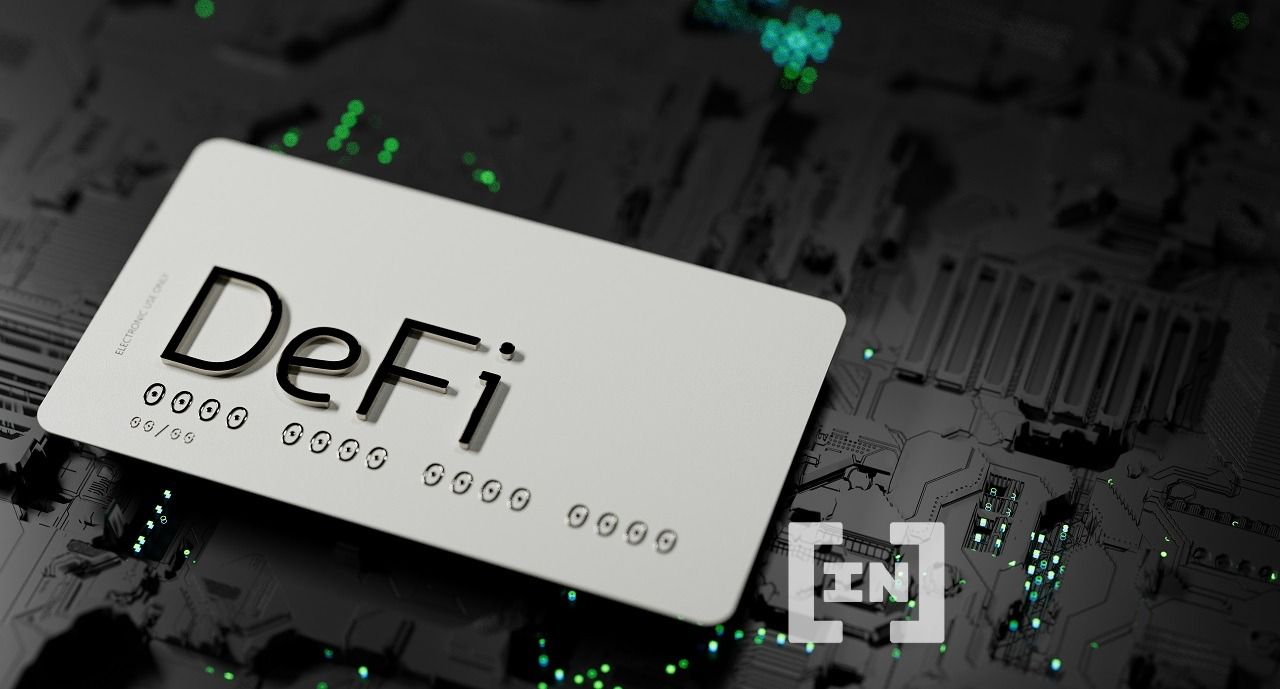Lending has become the fastest-growing sector of decentralized finance (DeFi) in recent years. Now this segment accounts for almost half of the total volume of DeFi market transactions, or, to be more precise, about $40 billion, according to Statista.
Most experts agree that this is not the limit, given the rapidly growing demand for loans and the huge pool of potential lenders. The decentralized loan market can easily grow exponentially because of its advantages over traditional lending.

The main advantage is the radical expansion of the number of potential creditors. DeFi’s open architecture allows any cryptocurrency user to become a lender if they are willing to take the risk. At the same time, in a decentralized system, credit risks are lower, since the information about the financial position of borrowers is more transparent than in the traditional financial system.
Savings for Borrowers
The decentralized market offers significant savings to borrowers, since they can meet lenders without intermediaries. In addition, borrowers can simultaneously interact with several pools of lenders, forcing them to reduce their appetites.
Giving and receiving loans in cryptocurrencies has become extremely popular since the advent of the Aave and Compound credit protocols, which allow users to offer cryptoassets for interest or use their value as collateral to borrow other assets. Analysts note, however, that these platforms operate more like a pawnshop than a bank, requiring borrowers to over-collateralize their loans. In other words, when one takes out a loan, their average collateral is 120% of the principal.
The ineffectiveness of this system is obvious: depositing $120 of collateral to obtain a $100 loan can only be justified for a very limited number of commercial transactions, such as short-term speculation or leveraged trading. However, this particular collateral scheme is the most popular one in DeFi today, since the traditional mechanism for assessing the reliability of borrowers (a credit rating) is not applicable in decentralized finance. The reason is simple: almost all transactions are carried out anonymously, meaning that it is simply impossible to draw up a credit history for a particular borrower.
Over-collateralization as the main barrier to decentralized lending
Every day it becomes more obvious that the system of excessive collateral on loans is becoming the main barrier to the development of both decentralized lending and the entire DeFi segment. And the crisis is just around the corner: according to a recent report by Messari, in the third quarter of this year, liquidity providers on Compound received the lowest interest rates on their contributions since the launch of the platform.
Interest rates are declining mainly because of the influx of new lenders hoping to make a profit. And although an increase in the volume of loans is still higher than the growth of the amount of deposited money (57% versus 48% in the quarter), this gap is rapidly closing and will soon disappear. In other words, the supply of loans will exceed the demand for them. This may lead to a sharp drop in the income of lenders and a collapse of the decentralized lending market.
According to Messari, due to lower interest rates on loans, lenders’ income in the third quarter of 2021 alone fell by 19% (from $96 million to $78 million). To reverse this trend, the DeFi industry needs to learn how to make loans with low collateral or, ideally, none at all. This will be a big step in the evolution of the industry, opening up opportunities for decentralized corporate lending and saving DeFi from stagnation.
Impending stagnation in lending
There are no simple solutions here. That’s why many companies are fighting against the impending stagnation by creating more attractive conditions for clients in terms of the volume of collateral and loan rates. The most radical example is the Liquity project, launched in April, which offers interest-free loans where borrowers must maintain a minimum collateral ratio of “just” 110%. Unfortunately, it is not yet clear what benefits this innovation promises for creditors.
Other projects focus on protecting clients from the volatility inherent in the cryptocurrency market in general and the cryptocurrency lending market in particular. As a result, loans with a fixed rate are now trending. In June, Compound Labs announced a product called Compound Treasury, which guarantees deposits at a fixed interest rate of 4% per annum. Compound expects Treasury to generate more dollar-denominated liquidity, potentially making loan rates more attractive to borrowers.
Still, these half measures can only postpone the crisis in the decentralized lending market. It is also becoming clear that DeFi’s cannot achieve its next level of development without the advent of decentralized corporate lending. The problem is that companies will never take out loans with full collateral.

The future belongs to bonds
How do we solve the problem of lending without using full collateral? Only a few projects have accepted this challenge. Compound Labs’ main competitor — the Aave platform — is developing a limited form of unsecured lending through a loan delegation mechanism. This model shifts the responsibility of supporting the collateral to the debt underwriter, who will take responsibility for collecting the debt, and the end client will receive a loan with partial collateral or no collateral at all. The inclusion of the debt underwriter in the lending process, however, will clearly make loans more expensive for the borrower and reduce the lender’s profit.
A similar mechanism was launched this year by Cream Finance in the form of Iron Bank’s lending service. It provides under-collateralized loans to a limited number of proxies, whose reliability has been preliminarily assessed by Cream Finance experts. That being said, it is still unclear how Cream plans to reimburse liquidity providers if an approved borrower fails to return the money.
DeBond scheme
Another new project — DeBond — has managed to build a scheme that closely resembles the established practices of the traditional market. The company provides debt financing through bonds.
This model requires a potential borrower to pledge their digital assets into a smart contract and set the parameters of the loan, including the term, amount, interest rate, time, and amount of each loan payment. Moreover, the user can choose all these parameters individually, based on their own needs and capabilities. This smart contract is a complete analogy to a traditional bond, to the extent that the borrower can choose its type — with a fixed income or a floating rate. A formalized smart contract is placed on an electronic auction site, where the lender can buy such a bond if the proposed terms are attractive. As a result, the issuer receives a loan, and the lender receives a pledge and their money back, guaranteed by a smart contract.
But that’s not all: the new EIP-3475 algorithm used by DeBond allows the lender to issue derivatives on outstanding loans, packing them into new bonds with different combinations of risk and return. These derivatives can be traded on the secondary market, using DeBond’s platform. Thus, their credit risk is shared between liquidity providers. This is a major advantage for the lender over existing DeFi lending protocols. For the borrower, the main advantage is that the collateral will not need to be liquidated if its value falls below the established threshold of 110-150%.
Bonded Loans
DeBond’s attention to the mechanism of bonded loans is well-justified, since bonds are the main instrument of corporate lending today. By the end of 2020, dollar-denominated bonds totaled nearly $21 trillion, exceeding 132.5% of U.S. nominal GDP. To make an analogy, we may apply the same ratio to the total capitalization of the DeFi market, which is slightly more than $52 billion. This implies that the volume of the bond market in this segment should be $69 billion.
If DeFi manages to launch instruments similar to traditional bonds, decentralized finance can become an important market for corporate debt and an influential segment of the global financial market. After all, as Cream Finance rightly noted in its presentation, the $70 billion market for direct bank lending is “a pittance when compared to the size of all US corporate debt which at year-end 2020, soared past $10 trillion.”
Want to talk about defi or other topics? Then join our Telegram group.
Trusted
Disclaimer
Following the Trust Project guidelines, this feature article presents opinions and perspectives from industry experts or individuals. BeInCrypto is dedicated to transparent reporting, but the views expressed in this article do not necessarily reflect those of BeInCrypto or its staff. Readers should verify information independently and consult with a professional before making decisions based on this content. Please note that our Terms and Conditions, Privacy Policy, and Disclaimers have been updated.


